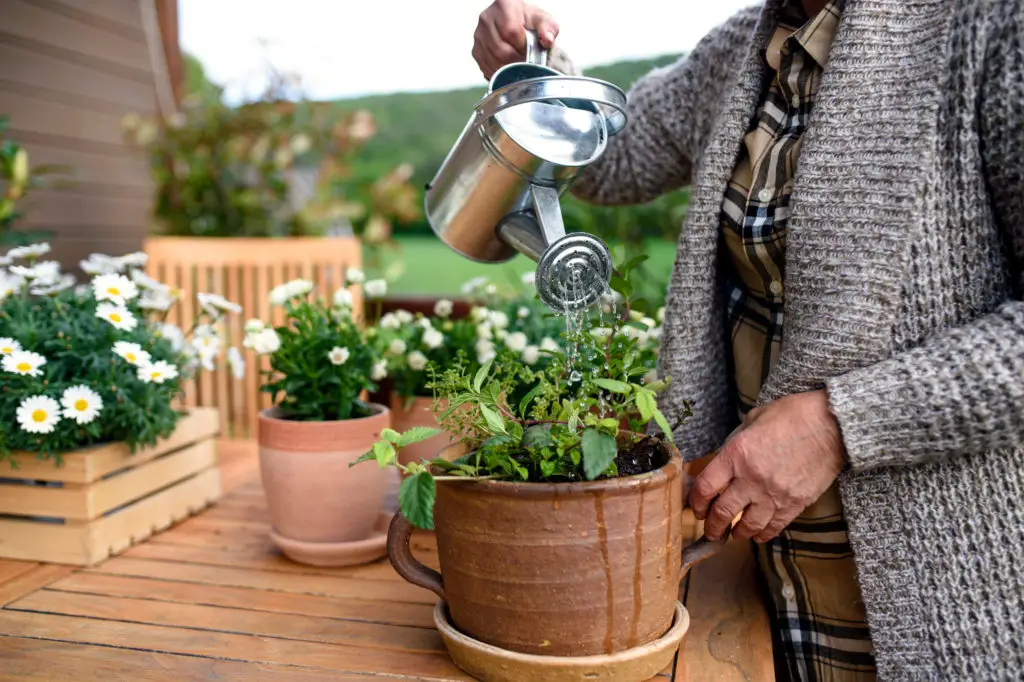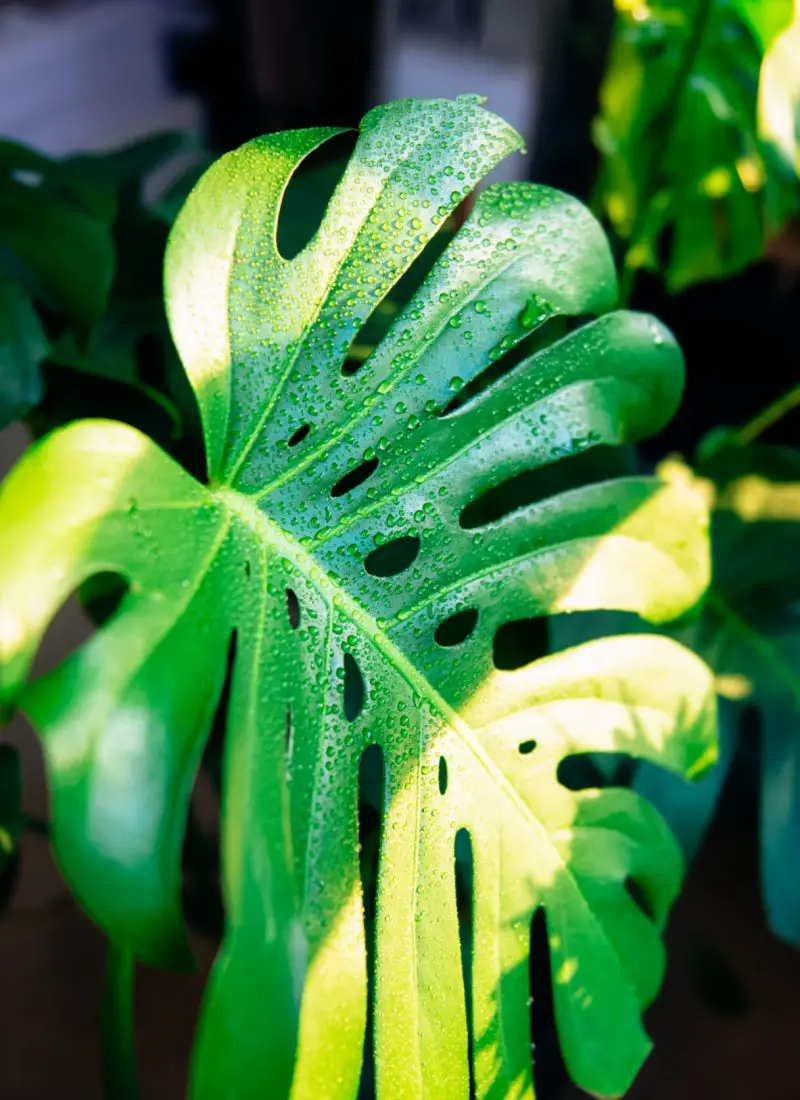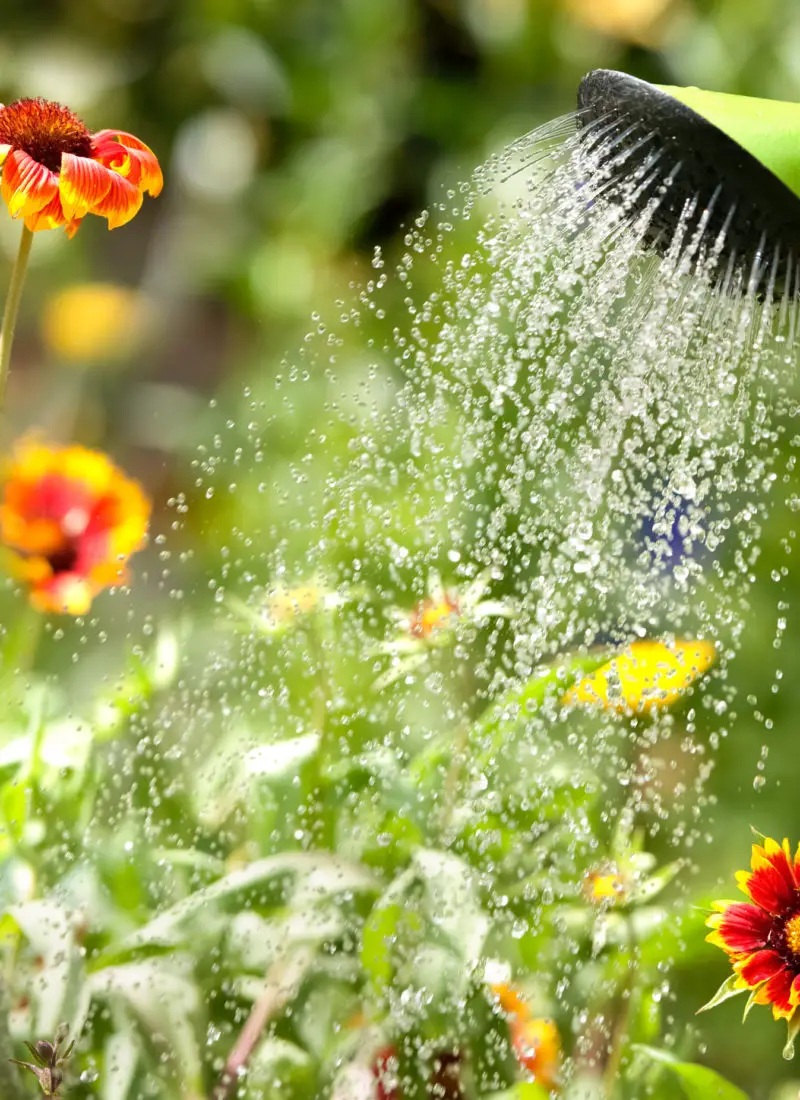
Top and bottom watering for potted plants is not a new thing. But it does make beginners wonder “which one should I do?”
As a general rule, it’s best to top and bottom water potted plants. The former is a more common watering method and helps flush out salt build-up in the soil. Bottom watering is advantageous for plants sensitive to foliage splashback, loosening compacted soil, and preventing fungus gnats.
Below, I elaborate on these two watering methods with some tips to help you along the way:
(As an Amazon Associate, I earn from qualifying purchases.)
Table of contents
What is Top & Bottom Watering?


Top watering is simply saturating plants overhead, either all over their foliage and soil, or just at the soil level. Plants are soaked thoroughly, usually with a watering can, until excess water leaves through the pot’s drain holes. It’s a familiar method that most budding gardeners start with.
Bottom watering is placing water in the saucer of your potted plants and letting the soil suck it up through the drain holes. It’s a little unorthodox, but it does work. You’ll have to refill the saucer several times until the water level stops decreasing. Then you can discard it to prevent standing water, so the soil doesn’t get too wet.
An alternative bottom watering method is submerging a quarter of the potted plant in a slightly larger container filled with shallow water. The pots are then moved onto a rack to remove leftover water before placing them back in their respective areas. It usually takes about 15 minutes to hydrate the soil but do the knuckle test to be sure.
Should you water plants down at the roots or over the leaves?
It’s better to water plants directly around the soil to reach the roots quickly. However, occasional overhead watering on the leaves is encouraged to wash off accumulated dust. This is best done in the early morning so that the droplets will evaporate throughout the day.
In short, top v.s. bottom watering is a personal preference for each plant owner. Each option has its pros and each method is more useful in certain situations and less in others. This brings us to the next section …
When is Bottom Watering More Suitable to Use on Plants?

There are four unique scenarios in which bottom watering is the more appropriate method to water your plants:
- When watering fuzzy-leafed plants like African Violets or a Purple Passion Plant. Their hairy leaves tend to trap water for longer than necessary. So, any splashback on their foliage from top watering is potentially a breeding ground for pathogens. It’s safer to simply bottom water instead and avoid unaliving that foliage that took you so long to grow.
- When your plant is suffering from a fungus gnat infestation. These annoying buggers thrive on overly wet soil, so your best option is to dry the topsoil. Use the knuckle test to gauge that the plant is sufficiently watered, ensuring the top stays bone-dry.
- When the soil has become compacted. Potting mix with peat becomes hydrophobic if it’s left to dry out completely one too many times. Bottom watering helps to loosen it up again. However, this technique is a temporary solution.
- For small potted plants, it’s best to use the submerged bottom watering method.
- For large potted plants without a saucer, you can slowly top water them with drip irrigation. This ensures even saturation to rehydrate the soil and carry water to the roots. You can also let a downpour of rain do the job if you can’t be bothered.
- When you have an overwatering problem. Now, this may and may not work for some people. But it’s helpful because you’re only giving the amount of water your plant needs. Just make sure to throw away any standing water in the saucer afterward.
For the most part, top watering usually will suffice but bottom watering does have its use cases.
What Are the Dos & Don’ts of Top and Bottom Watering?

Here are the following tips that apply to both top and bottom watering plants:
- DO the knuckle test before watering to gauge whether your plants need watering. I cannot emphasize this enough; it takes less than 5 seconds, and it helps you avoid drowning your plants. You can also use a moisture meter (Amazon link) if you’re particularly squeamish about getting your fingers dirty or just like the accuracy of a meter like I do.
- DON’T wait until your plants are wilting to water them. Underwatering may be more easily fixed than overwatering, but that doesn’t mean you should dry your plants out to the point of death before watering. Be mindful of your plant’s preferred dampness since each one is different. For example, Calatheas like a constantly moist soil environment, while succulents appreciate the soil drying out before its next watering.
- DO use filtered water or rainwater where possible. Other than that, avoid using softened water and tap water with high mineral content. If you’re interested in knowing more about rainwater, you can read this article.
- DON’T ignore compacted soil. Bottom watering may help your plant for a while. But it’s better to replace it with a potting mix or add compost to improve the soil structure and drainage. Plus, you can check if your plant is rootbound and requires repotting.

For bottom watering in particular, here are some things to keep in mind:
- DO top water your plants every three months if you bottom water them. It helps get rid of mineral salt deposits in the soil, typically from the tap water or fertilizer:
- Start by wiping them off the pot’s rims or scraping the topsoil.
- Afterward, place the pot under running water in the sink or outside. This leaches out any leftover salt in the soil entirely.
- Lastly, leave the plant for an hour or so to drain surplus water from the pot. Note: this may not be suitable for drought-tolerant plants. They may go into shock from that much water and die.
- DON’T bottom water an infested/infected plant in the same container with other plants. Pathogens can easily travel in water, causing cross-contamination. Ensure to quarantine the affected plant away from the rest and water separately. Here’s an article on handling pests & diseases in plants.
There’s not much to say about top watering. Because if your plants are thriving all this time with no problem, you’re probably all good watering on the topside. But just in case, here are two tips that may help the beginner gardeners in the long run:
- DO top water your plants at the soil level. This practice ensures you only direct moisture to your plant’s needs at the roots.
- DON’T overhead water your plants, wetting the leaves. Unless you’re doing it in the early morning, as mentioned earlier.
Final Words
All in all, it’s really up to you whether you want to top or bottom water your plants. Doing either one is fine, but doing a mix of both may be better. Happy planting!
References:
https://mgsantaclara.ucanr.edu/garden-help/watering-hydrophobic-soil/
https://extension.umd.edu/resource/watering-indoor-plants
https://aces.nmsu.edu/ces/yard/2005/012905.html
https://web.extension.illinois.edu/containergardening/watering.cfm






